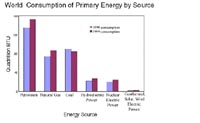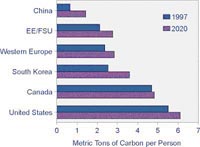
Statistics on the world use of petroleum, natural gas, coal, and other energy sources in 1990 and 1999. Note that in contrast to all other energy sources, the use of coal decreased between 1990 and 1999. Units are in Quadrillion Btu (British Thermal Units) - see the glossary for definition. From: International Energy Agency at International Energy Agency

